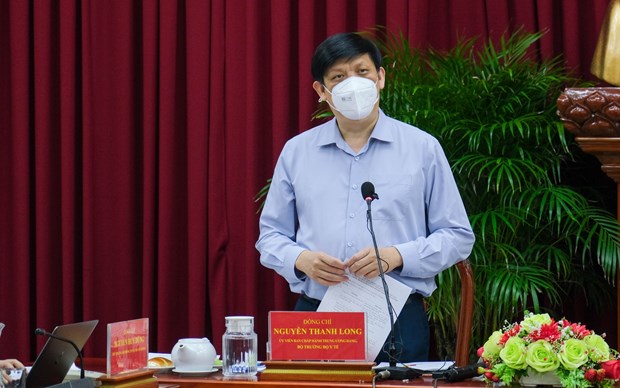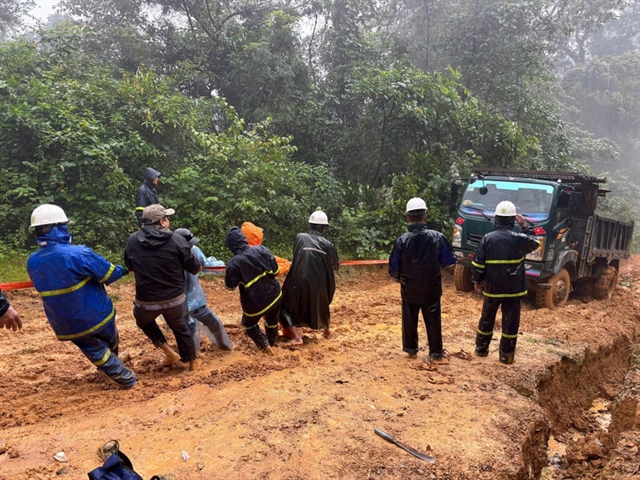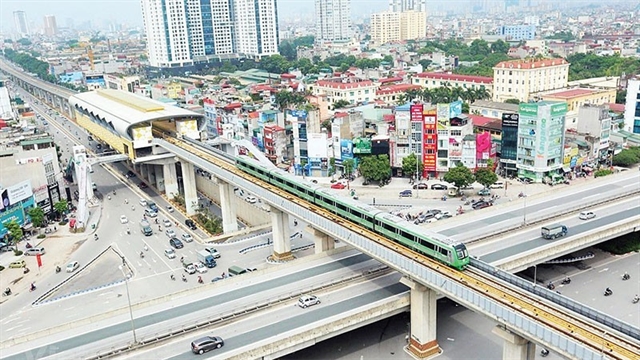 Society
Society


|
| Health Ministry Nguyễn Thanh Long. VNA/VNS Photo |
HÀ NỘI At the Government’s monthly meeting on Saturday, Prime Minister Phạm Minh Chính announced that the pandemic was basically under control nationwide as the number of new infections and COVID-19 relating deaths was falling in major hotspots of HCM City, Bình Dương, Đồng Nai and Long An.
“All strategies and decisions to respond to the complicated development of the COVID-19 pandemic in Việt Nam have been made and implemented quickly, effectively and flexibly,” Health Minister Nguyễn Thanh Long said.
Among options to consider, those with the least risk were selected, Long said.
Looking back on what has been done in the fight against COVID-19 during the fourth wave, minister Long emphasised the five key decisions that generated notable results.
The first decision is about the lockdown of industrial zones – major COVID-19 clusters in two northern provinces of Bắc Giang and Bắc Ninh and regular mass testing.
Quick antigen tests were used to detect SARS-CoV-2 positive cases, take them to concentrated areas or treatment areas to stop infections in the community, Long said.
At that time, there was an opinion that only people with COVID-19 symptoms should be tested. However, in fact, up to 80 per cent of COVID-19 cases are asymptomatic ones, Long said, adding that such asymptomatic cases could pose a very high risk of spreading the disease.
Meanwhile, field hospitals and intensive care units were established at COVID-19-hit areas together with support for people living in the areas.
“The COVID-19 prevention and control in Bắc Ninh and Bắc Giang are typical lessons for Việt Nam in the COVID-19 fourth wave,” Long said.
The second decision was about the implementation of strict social distancing measures in dozens of localities in the south.
Together with the social distancing, Việt Nam had to prepare for relevant issues of social welfare, travel, business and production, security and people’s livelihoods.
“Social distancing measures were stricter and stricter. However, as soon as we saw social distancing on a small scale failed to curb infections, the National Steering Committee for COVID-19 Prevention and Control immediately shifted to large-scale social distancing in 20 southern provinces and cities,” Long said.
The third decision was about human resources.
Nearly 300,000 frontline workers including health workers, soldiers and police reached COVID-19 hotspots.
During the mass testing and vaccination in Hà Nội the first half of last month, medical workers from 12 neighbouring provinces arrived in the city to support them.
The fourth decision was about consensus in leadership and the decentralisation in COVID-19 prevention and control.
Every commune and ward was considered “a fortress” and everyone was a soldier in the fight against COVID-19. People’s benefits were put at the centre of all disease prevention and control work.
Mobile healthcare stations were set up at the grassroots level so people could access health services and support as soon as possible.
The fifth decision was about the country’s largest-ever vaccination drive. Thanks to directions from Politburo, National Assembly, Government and Prime Minister, the COVID-19 vaccination has been done safely and effectively despite barriers and difficulties.
The COVID-19 vaccine purchasing ensured transparency and met the demand to expand vaccination coverage.
Quoting Secretariat of HCM City Party Committee Nguyễn Văn Nên that only insiders could see and understand how hard they worked, Health Minister Nguyễn Thành Long affirmed that the Government, ministries and agencies made joint efforts to solve problems and challenges in COVID-19 prevention and control.
For example, when Việt Nam conducted mass COVID-19 testing, some people said it was unnecessary. However, the US’ experience showed that mass testing was key to bring the country back to normal.
Việt Nam was not the only country that followed the “Zero COVID” strategy but in the early stages of the pandemic, almost all countries in the world followed the strategy. Only a few countries allowed the controlled spread of coronavirus among the population in attempts to achieve herd immunity.
People questioned Việt Nam’s approach to control the COVID-19 pandemic such as mass testing and isolating COVID-19 hit areas.
Explaining the issue, Long said that scientifically, no one was exempt from COVID-19, from newborns to the elderly.
In terms of the health system, Việt Nam’s healthcare capacity was unable to deal with the situation when infections kept increasing.
In terms of culture and traditional morality, it was hard for people to accept human losses. People’s lives and safety must be always of top importance.
“Việt Nam only changed strategies in COVID-19 prevention and control when people got vaccinated against COVID-19. It’s an important issue,” Long said, “the changes must depend on the country’s situations and the changes aimed to ensure people’s safety.”
“The pandemic in Việt Nam will not end this year or next year. It could last longer,” Long said, adding that the health ministry was developing contemporary guidelines for safe, flexible and effective resilience to COVID-19.
The guidelines aimed to protect people health and lives, minimise COVID-19 cases and deaths, restore and develop socio-economics activities, ensure security and social order. VNS




